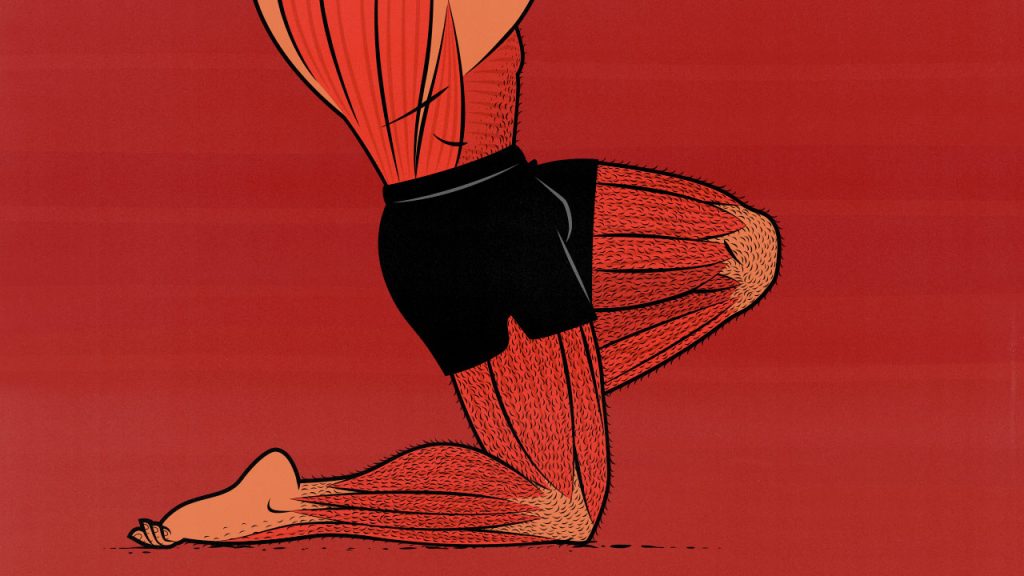
The Best Leg Day Workout for Building Muscle
Leg Days work all the biggest muscles in your body, giving you chiselled thighs, round glutes, and muscular calves. They’ll also give you a thicker torso, making you sturdier from head to toe.
We’re coming at this from a hypertrophy training angle. These workouts are designed to help you build muscle. Still, leg training always works best when it’s built on a solid foundation of strength-training principles.
If you understand the basic principles, it isn’t difficult to program a good Leg Day workout. Your legs are full of big, simple muscles that respond well to big, heavy exercises. Unfortunately, those exercises are notoriously intimidating, and the punishment for skipping them is severe: you will come to physically resemble a chicken.
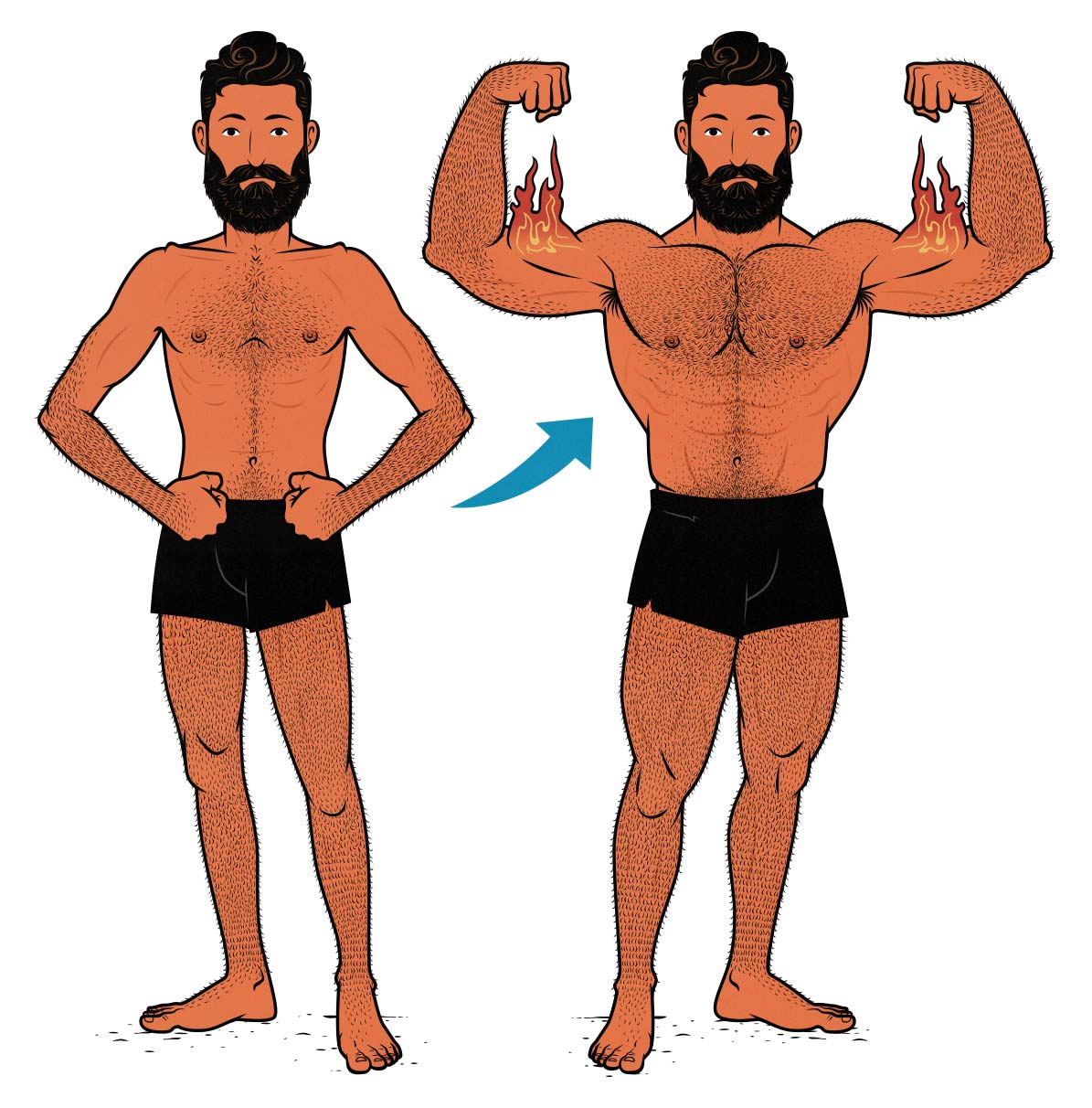
What’s Leg Day?
Leg Day workouts are part of body-part splits, where you split your body into different muscle groups, allowing you to train 4+ times per week while still giving each muscle 2–3 days to recover. In this case, you’re training your leg muscles while giving your other muscles a chance to rest.
You can slot Leg Days into Bro Splits:
- Monday: Chest Day
- Tuesday: Back Day
- Wednesday: Shoulder Day
- Thursday: Leg Day <==
- Friday: Arm Day
- Saturday: Rest
- Sunday: Rest
You can also slot them into Push/Pull/Legs Splits:
- Monday: Push Day
- Tuesday: Pull Day
- Wednesday: Leg Day <==
- Thursday: Push Day
- Friday: Pull Day
- Saturday: Leg Day <==
- Sunday: Rest
Note that Leg Days aren’t the same as Lower-Body Workouts. Leg Days are part of the bodybuilding tradition, whereas Lower-Body Workouts are part of the strength and performance training tradition. Both can be ideal for building muscle, but they approach it in somewhat different ways.
That means there are two different types of Leg Day. In a Bro Split, there’s only one Leg Day, but deadlifts can be done on Back Day. In a Push/Pull/Legs Split, there are two Leg Days, usually with one focused on deadlifts and the other on squats. We’ll cover both!
Muscles Worked During Leg Day
Leg Days work your quads, glutes, hamstrings, calves, spinal erectors, and sometimes your abs. Your quads and glutes are the biggest muscles in your body, with your calves and hamstrings following along behind. This can make for a gruelling workout, and it fills many hearts with dread, but it’s your best opportunity to stimulate muscle growth.

Squats and deadlifts train your spinal erectors and most of your lower-body muscles, with a couple of notable exceptions.
- Your calves aren’t a limiting factor in any compound lift. If you want to bulk them up, you need to train them with calf raises.
- Your quads have four muscle heads, most of which are trained perfectly well by squats. However, the rectus femoris crosses the hip joint, pulling your knees up. As a result, it can’t fully engage during squats. Better to train it with leg extensions or reverse Nordics.
- There are smaller glute muscles called the gluteus medius and minimus. These muscles pull your legs to the side. You can train them with side planks.
The Best Leg Day Exercises
Squats (Knee Dominant)
Squats are a knee-dominant exercise that work your quads and glutes—the two largest muscles in your body. That makes squats one of the best exercises for building muscle.
If you’re sympathetic to Starting Strength or StrongLifts 5×5, our preference for knee-dominant squats may seem heretical. That’s because this is a hypertrophy training workout designed to stimulate muscle growth, not a strength training routine rooted in powerlifting culture. More on that in our treatise on squats.
Here are some of the best squat variations for building muscle:
- Goblet squats are ideal for beginners. They’re the easiest to learn, encourage a deep range of motion, and do a great job of bulking up your upper body along with your quads.
- Front squats are my favourite squat variation. They encourage a deep range of motion, and they’re fantastic for building bigger quads, a thicker torso, and a sturdier posture.
- High-bar squats are easier on your spinal erectors. They allow you to emphasize your quads without working your postural muscles as hard, making them quite a bit less fatiguing.
- (Bulgarian) split squats allow you to train one leg at a time. This allows you to work your quads with lighter loads, putting less strain on your back. They’re also great for mobility and general strength. They were a staple in Marco’s programs for professional and Olympic athletes.
- Leg presses are great for removing your spinal erectors entirely. They allow you to work your quads through a deep range of motion without any involvement from your postural muscles.
- Leg extensions train your rectus femoris. The rectus femoris has trouble engaging when your hips are moving. By locking your hips into the machine, you can work them much harder.
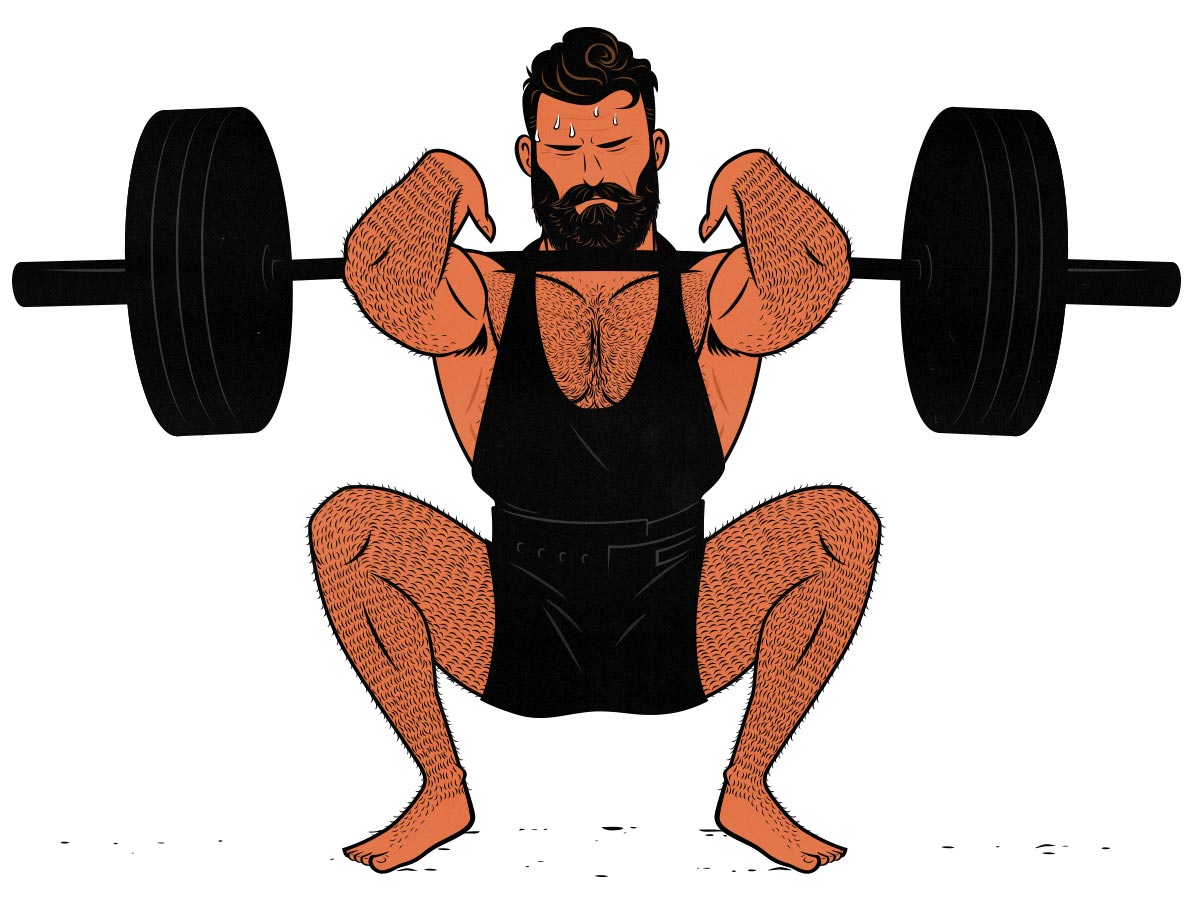
Deadlifts (Hip Dominant)
Deadlifts are the king of full-body exercises. The squat works bigger muscles, but the deadlift works more of them, especially in your back. It’s especially good for your glutes, hamstrings, spinal erectors, and traps. It works all your other back muscles quite well, too.
- Conventional deadlifts emphasize your hips and spinal erectors. For some people, deadlifts work their lower backs too hard. After all, deadlifts hardly belong on Leg Day if your lower back gives out before you’ve stimulated your hips.
- Sumo deadlifts are a little easier on your lower back. Your torso will be more upright, giving your quads a bit more work and your lower back a little less work
- Trap bar deadlifts are great if you have a trap bar. Trap bars make deadlifting more comfortable. There’s no real downside, either, provided you use good deadlift form (instead of squatting the weight up).
- Stiff-Legged “Romanian” deadlifts are easier on your back and harder on your hamstrings. Your hamstrings cross the knee joint, so to train them properly, you need to keep your knees relatively stiff. Keeping your knees stiff will keep your torso more vertical, minimizing stress on your lower back.
- Good mornings are easier on your upper back. They work your hips, hamstrings, and spinal erectors like a Romanian deadlift, but you’ve got the bar on your back instead of in your hands. That means your upper back won’t need to work as hard. This can be handy when you’re training your legs the day after training your back.
- Step-ups and lunges work your hips and quads. They’re a hybrid between squats and deadlifts. They’re great for working your legs without tiring out your back. They’re also great for improving athletic performance.
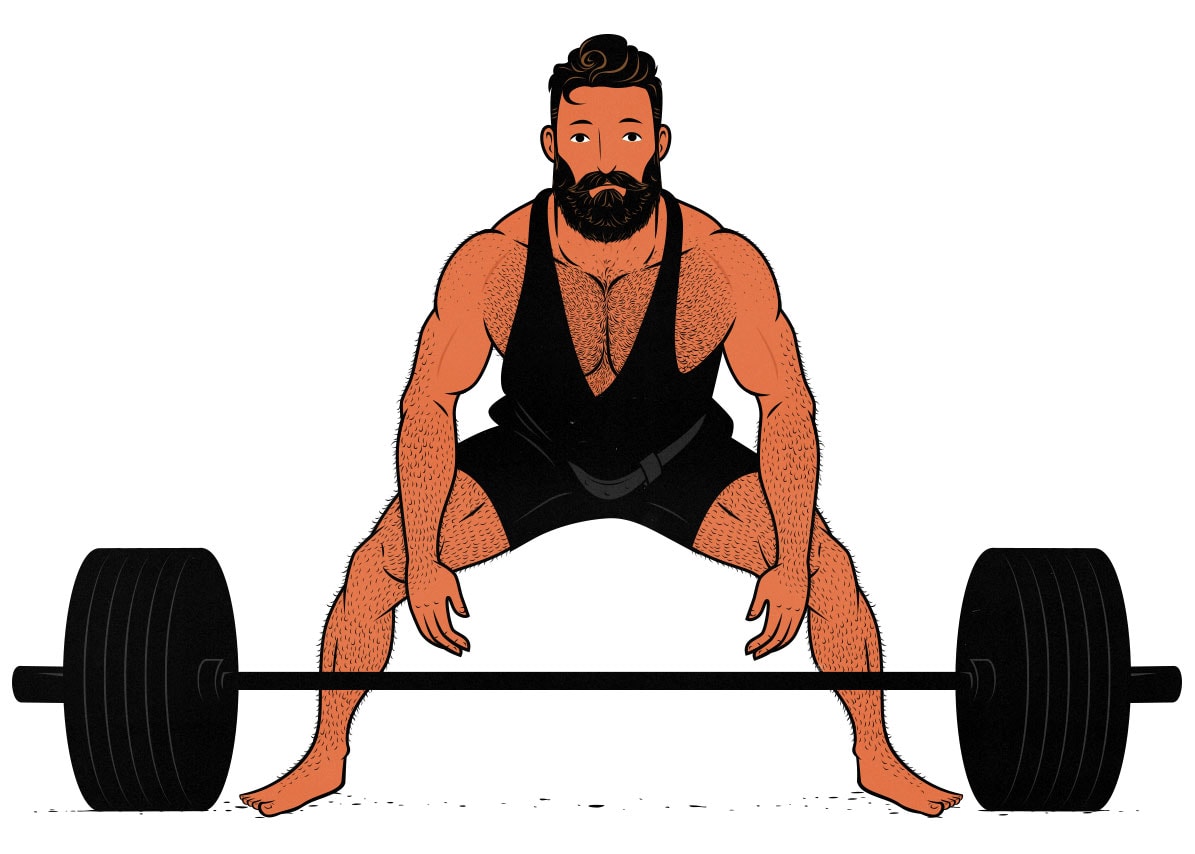
Calf Raises
Calf raises are one of the oldest muscle-building exercises, originating in Ancient Greece. You begin by carrying a young calf upon your back. Then, as the calf grows into a bull, you’re forced to lift gradually heavier weights. This trains your spinal erectors, traps, and all the postural muscles that hold you upright.
In modern times, you can get many of the same benefits by doing loaded carries, such as farmer carries, one-arm farmer carries, waiter carries, and cross carries, all of which emphasize different postural muscles.
You could also go rucking, a military exercise where you go on a long hike with a weighted vest or backpack.
Hip Thrusts?
Hip thrusts are a hip hinge exercise, just like the deadlift. If you’re able to work your glutes with deadlifts, you don’t need these. They’re redundant, and the strength curve isn’t quite as good for building muscle.
However, some people have stronger hips than spinal erectors, making it hard to get a good glute workout from deadlifts. This is especially common with women. That’s where hip thrusts come in handy.
- One-legged hip thrusts are a simple “finisher” for your glutes. They’re easy to learn and simple to set up. All you need is a bench. Rep out each leg to failure, rest for 30 seconds, and then do it again. My wife likes to finish every workout with a few sets of these.
- Barbell hip thrusts are easier to load heavier. Barbell hip thrusts can be a pain to set up, and you’ll probably need to put padding between the barbell and your hips, but they’re great for lifting heavier.
- Glute bridges are easier to set up. The range of motion isn’t as deep, and you’ll still need padding between the barbell and your hips, but you can do them from the floor.
Training Volume for Your Legs
As we explained in our article on training volume, you need around 9–18 sets per muscle per week to maximize your rate of muscle growth. You also need to train each muscle at least twice per week. That gives you a target of 4–9 sets per muscle per workout.
Leg exercises are incredibly powerful. Squats and deadlifts do a great job of working your lower-body muscles through a deep range of motion. It depends on the person, but relatively few of us need 9 sets for our leg muscles.
That makes Leg Days relatively simple. Do a few sets of squats, a couple of sets of deadlifts, and some calf raises. That gives you 7 sets for your glutes, 4 for your quads, 3 for your hamstrings, and 3 for your calves. From there, you can add extra exercises as desired.
The Workouts
Leg Day Workout (for Bro Splits)
| EXERCISE | SETS | REPS |
|---|---|---|
| Front Squats | 3–4 sets | 6-10 reps |
| Romanian Deadlifts | 2–3 sets | 8-12 reps |
| Leg Extensions | 3 sets | 10-15 reps |
| Seated Hamstring Curls | 3 sets | 10-15 reps |
| Calf Raises (Optional) | 3–5 sets | 12–15 reps |
This is a classic Leg Day workout that’s perfect for building muscle. It starts with a squat variation. I like front squats, which train your quads through a deep range of motion while bulking up your upper spinal erectors. You could swap those out for goblet squats, safety-bar squats, or high-bar squats if you prefer.
Romanian deadlifts come next, working your hips through a deep range of motion while bulking up your lower spinal erectors. If your upper back is tired, you could swap these out for good mornings.
Next come leg extensions and hamstring curls, which can be done as a superset. The leg extensions work your quads, this time including the elusive rectus femoris. Seated hamstring curls work your hamstrings under a deep stretch.
Calf raises are one of the few exercises that work your calves. I don’t train my calves, but many guys like to. Standing calf raises work your calves under a deeper stretch, but seated calf raises are okay, too.
Leg Day Workouts (for Push/Pull/Legs)
These twin Leg Day workouts are for a 6-day Push/Pull/Legs Workout Split, where you have two leg days each week. The first is built around squats, emphasizing your quads and upper spinal erectors. The second is built around deadlifts, emphasizing your hips, hamstrings, and lower spinal erectors.
| EXERCISE | SETS | REPS |
|---|---|---|
| Front Squats | 3–4 sets | 6-10 reps |
| Romanian Deadlifts | 2–3 sets | 8-12 reps |
| Leg Extensions | 3 sets | 10-15 reps |
| Seated Hamstring Curls | 3 sets | 10-15 reps |
| Calf Raises (Optional) | 3 sets | 12–15 reps |
This workout kicks off with your main squat variation. For me, that’s usually the front squat. Goblet squats, high-bar squats, safety bar squats, and low-bar squats can also work. Try to choose a variation that lets you sink all the way down, getting a full bend at your knees.
Romanian deadlifts come next. If your upper back is tired from Pull Day, you can swap them out for good mornings. Either way, try to keep your knees straight, working your hamstrings under a deep stretch.
After that, you can superset leg extensions and hamstring curls, then follow them up with calf raises. Standing calf raises work your calves under a deeper stretch.
| EXERCISE | SETS | REPS |
|---|---|---|
| Deadlift | 3–5 sets | 6-12 reps |
| Leg Press | 3–5 sets | 8-12 reps |
| Back Extensions | 3 sets | 10-15 reps |
| Reverse Crunches | 3 sets | AMRAP |
This second workout is built around the deadlift. Conventional deadlifts are a pure back exercise for me, so I usually use sumo deadlifts here, allowing me to work my hips harder. Trap bar deadlifts are another good option.
The leg press is primarily for your quads, back extensions for your hips and spinal erectors, and then reverse crunches for your abs.
Glute-Emphasis Leg Day Workout
| EXERCISE | SETS | REPS |
|---|---|---|
| Squats | 4–5 sets | 8-12 reps |
| Romanian Deadlifts | 3 sets | 10-15 reps |
| Lunges | 4 sets | 10-15 reps |
| 1-Legged Hip Thrusts | 3 sets | AMRAP |
| Side Planks | 3 sets | AMRAP |
This is a classic Leg Day workout for women. Compared to the workout for men, it puts more emphasis on your hips, the same on your thighs, less on your spinal erectors, and almost none on your calves. Obviously, feel free to modify this workout based on your goals.
The workout starts with any squat variation. High-bar squats make for a good default, but you could also do goblet squats, low-bar squats, front squats, or even split squats.
Romanian deadlifts come next, working your hips and hamstrings through a deep range of motion. We follow those up with lunges, working your hips yet again, this time along with your quads. Step-ups are a great alternative to lunges.
After that comes 1-legged hip thrusts to finish off your gluteus maximus. Do as many reps as possible (AMRAP). Superset these with side planks for your gluteus medius and minimus, filling in the side of your hips. Hold the side planks for as long as you can. When these exercises become too light, you can hold a dumbbell on your hips.
Minimalist Leg Day Workout
| EXERCISE | SETS | REPS |
|---|---|---|
| High-Bar Squats | 3–4 sets | 6-10 reps |
| Romanian Deadlifts | 2–3 sets | 8-12 reps |
| Calf Raises (Optional) | 3 sets | 10-15 reps |
When you’re training 4+ days per week, you can build muscle with minimalist workouts. That’s one of my favourite things about training more often.
I don’t use minimalist workouts while bulking, but I love them during maintenance. This is a staple of mine. (I don’t do the calf raises.)
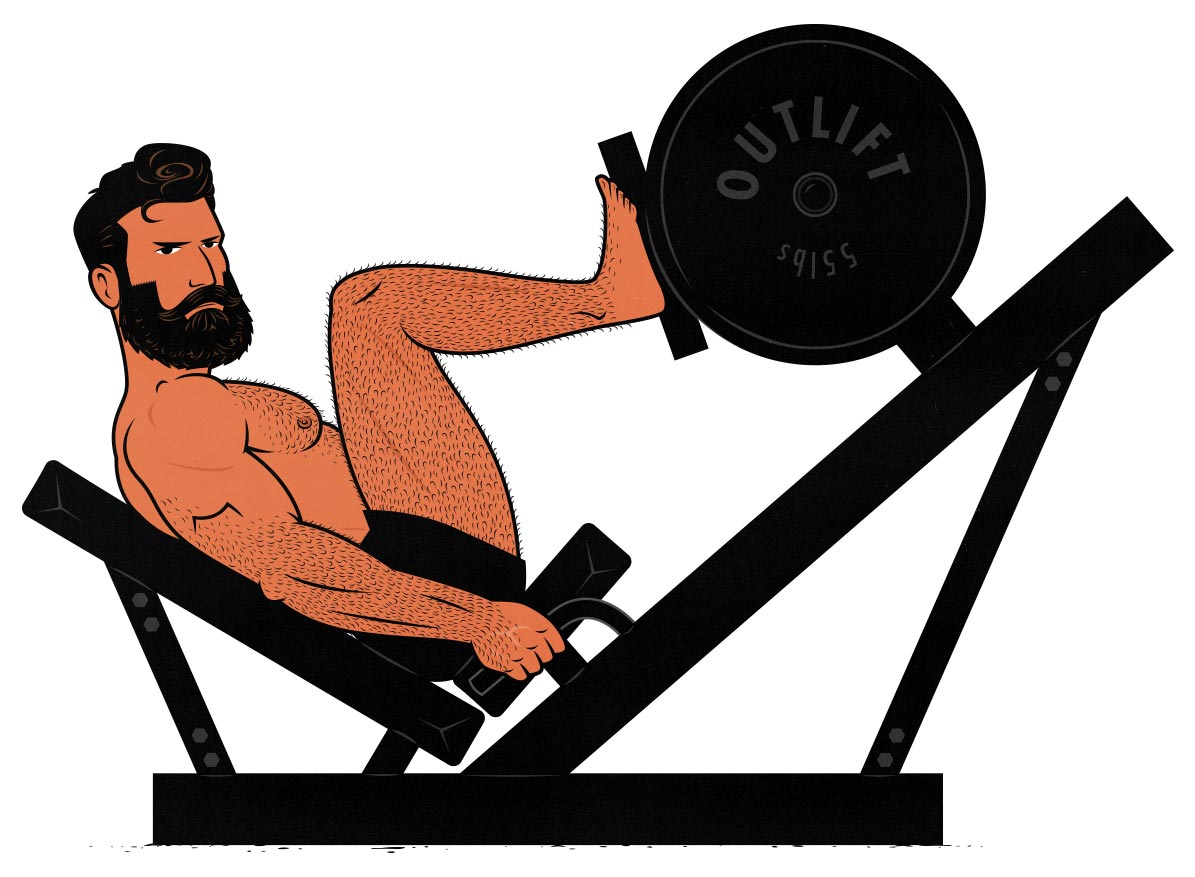
Training Guidelines
Leg Days are part of the bodybuilding tradition. They’re designed to stimulate muscle growth, they train just one area of the body, and they use relatively short rest times.
- Exercise Selection: Choose exercises that suit your body and your goals. If front squats are threatening to strangle you, by all means, choose another squat variation. If you can’t deadlift, stick to step-ups for now.
- Volume: We have 5 exercises in our main Leg Day workout. That’s likely enough to maximize your rate of muscle growth, provided you lift deep, hard, and properly. Some people benefit from higher training volumes than others, though, so feel free to build upon these workouts.
- Progression: The goal is to get progressively stronger at the first and second exercises of each workout. If you hit your rep targets last workout, add a little weight. If you’re still trying to add more reps, try to get more total reps than last time. For example, if you got 10, 10, 9, and 8 reps (37 reps) last workout, try to get 38+ reps this workout.
- Rest times: Classic Leg Day workouts use brutally short rest times, but we can extend them a little bit. Rest for 3–4 minutes between sets on the first and second exercises, 2 minutes for your other compound exercises, and 1 minute for isolation exercises.
- Reps in Reserve: Leave 2–3 reps in reserve when doing deadlifts, 1–2 reps in reserve when doing squats, and take every other exercise to the brink of failure.
- Muscle-Building Diet: You need enough food to fuel muscle growth. If you’re skinny-fat or overweight, you can get extra energy from your body fat. If you’re thin or lean, you’ll need to get that energy from your food—you’ll need to gain weight.
Conclusion
Alright, that’s it for now. If you have any questions about training your legs, drop them below. I’ll answer all the comments.
If you want the latest lifting research, methods, and workouts in your inbox, we have a free muscle-building newsletter.



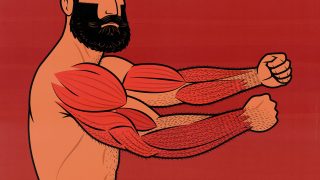
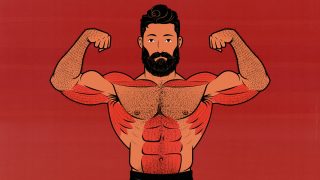

I personally think that doing deadlift variations to target the hamstrings is unnecessary in terms of stimulus-to-fatigue ratio. I think the most productive way to target the hamstrings is through leg curl variations or GHR/nordic curls.
Hey Martin, I agree. If you were only trying to stimulate your hamstrings, seated hamstring curls are much less fatiguing than Romanian deadlifts.
The reason we have deadlift variations in these workouts is to train everything else. Deadlifts work your glutes, hamstrings, spinal erectors, and almost every muscle in your back. To replace a deadlift with isolation exercises, you’d need hamstring curls, hip thrusts, back extensions, pullovers, reverse flyes, shrugs, face pulls, and so on. Even then, I’m not sure you’d see the same improvements in athleticism, overall strength, or bone density.
I’m currently doing a push pull leg and include deadlifts in my pull session. Can I use the same leg day and exclude deadlifts? Would I include another exercise instead like lunges? Thanks
Hey Varun,
You can program Push/Pull/Legs routines a few different ways. What you’re doing sounds good, too. You can include lunges or step ups on your leg day, yeah. You’d be training some muscles two days in a row, but that’s fine for building muscle 🙂